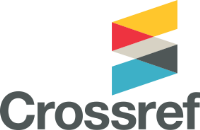ANALYSIS AND RESEARCH OF CHARACTERISTICS OF ALGORITHMS IN RECOMMENDER SYSTEMS
DOI:
https://doi.org/10.35546/kntu2078-4481.2024.4.48Keywords:
recommender system, content filtering, collaborative filtering, hybrid filtering, clustering methodsAbstract
The information environment is becoming more saturated and dynamic. Information grows according to a double exponential law. The process of searching, analyzing and filtering information is becoming more complicated every day, and the growing volume of information complicates the process of making informed decisions. Solving this problem is possible through the development and implementation of recommender systems. This article is devoted to the latest models of recommendation systems, namely: based on content filtering, collaborative filtering, hybrid filtering. Based on the analysis of scientific and technical literature, the underlying mechanism of the recommendation process was identified, and an overview of filtration methods and their characteristics was made. Presented are schemes for implementing recommendations and possible metrics for grouping relevant clients. The disadvantages of each recommendation process are characterized, namely: cold start, sparseness, "gray sheep" for collaborative filtering and is associated only with data on the subject of content filtering limitations. This justifies the superposition (combination) of these two filtering to create a hybrid filtering. The article considers the issue of the quality of recommender systems. In addition to traditional indicators of accuracy and completeness, modern approaches take into account diversity, novelty, unexpectedness of recommendations, robustness, interpretability, and fairness. Emphasis is placed on external destabilizing factors in the work of recommendation systems, in particular, the existence of a threat of violation of the confidentiality of the user's personal data and the threat of receiving incorrect recommendations as a result of a targeted attack on the recommendation system. As an example, the process of developing a recommender system for selecting sports equipment products is described: installing features before the operation of this system; the database of the characteristics of the sports equipment has been christened; the diagram of variants of the wiki was modeled; the security program was dismantled and protested by the Telegram bot. The results of the study can be implemented in the educational process of students 12 Information technology.
References
Personalization in Market Research – Why It Matters More Than Ever in 2024. https://ttconsultants.com/personalization-in-market-research-why-it-matters-more-than-ever-in-2024/#:~:text=In%202024%2C%20personalization%20in%20market%20research%20is%20no%20longer%20a,to%20stay%20relevant%20and%20competitive
Casaca, Joaquim & Miguel, Luis. 2024. The Influence of Personalization on Consumer Satisfaction: Trends and Challenges. 10.4018/979-8-3693-3455-3.ch010. https://www.researchgate.net/publication/383006376_The_Influence_of_Personalization_on_Consumer_Satisfaction_Trends_and_Challenges
Il Im and Alexander Hars. 2007. Does a one-size recommendation system fit all? the effectiveness of collaborative filtering based recommendation systems across different domains and search modes. ACM Trans. Inf. Syst. 26, 1 (November 2007), 4–es. https://doi.org/10.1145/1292591.1292595
P. Melville and V. Sindhwani, “Recommender Systems,” In: C. Sammut and G. Webb, Eds., Encyclopedia of Machine Learning, Springer, Berlin, 2010, pp. 829-838.
F.O. Isinkaye, Y.O. Folajimi, B.A. Ojokoh. 2015. Recommendation systems: Principles, methods and evaluation. Egyptian Informatics Journal, Volume 16, Issue 3, 261-273, https://doi.org/10.1016/j.eij.2015.06.005.
Hodovychenko, M. A., & Gorbatenko, A. A. Recommender systems: models, challenges and opportunities. Вісник сучасних інформаційних технологій, 2023. 6(4), 308–319. https://doi.org/10.15276/hait.06.2023.20
Jalili, M., Ahmadian, S., Izadi, M., Moradi, P., & Salehi, M. Evaluating collaborative filtering recommender algorithms: a survey. IEEE access, 2018. 6, 74003–74024. DOI: 10.1109/ACCESS.2018.2883742.
Burke, Robin. Hybrid Recommender Systems: Survey and Experiments. User Modeling and User-Adapted Interaction. 2002. 12. 10.1023/A:1021240730564
Mukund Deshpande and George Karypis. 2004. Item-based top-N recommendation algorithms. ACM Trans. Inf. Syst. 22, 1 (January 2004), 143–177. https://doi.org/10.1145/963770.963776
Abdelwahab, A., Sekiya, H., Matsuba, I., Horiuchi, Y., & Kuroiwa, S. Alleviating the sparsity problem of collaborative filtering using an efficient iterative clustered prediction technique. International Journal of Information Technology & Decision Making, 2012. 11(01), 33–53. https://doi.org/10.1142/S0219622012500022
Alabdulrahman, R., & Viktor, H. Catering for unique tastes: Targeting grey-sheep users recommender systems through one-class machine learning. Expert Systems with Applications, 2021. 166, 114061. https://doi.org/10.1016/j.eswa.2020.114061.
Aggarwal, Charu C. Recommender Systems: The Textbook: Springer, 2016. 499 p. DOI 10.1007/978-3-319-29659-3, https://pzs.dstu.dp.ua/DataMining/recom/bibl/1aggarwal_c_c_recommender_systems_the_textbook.pdf
E. Bojnordi and P. Moradi, "A novel collaborative filtering model based on combination of correlation method with matrix completion technique", Proc. 16th CSI Int. Symp. Artif. Intell. Signal Process. (AISP), pp. 191-194, 2012.
M. Ranjbar, P. Moradi, M. Azami and M. Jalili, "An imputation-based matrix factorization method for improving accuracy of collaborative filtering systems", Eng. Appl. Artif. Intell., vol. 46, pp. 58-66, Nov. 2015.
R. Van Meteren and M. Van Someren, "Using content-based filtering for recommendation", Proc. Mach. Learn. New Inf. Age MLnet/ECML Workshop, pp. 47-56, 2000.
Li, B., Li, G., Xu, J., Li, X., Liu, X., Wang, M., & Lv, J. A personalized recommendation framework based on MOOC system integrating deep learning and big data. Computers and Electrical Engineering, 2023. 106, 108571. https://doi.org/10.1016/j.compeleceng.2022.108571.
Krulwich, "Lifestyle finder: Intelligent user profiling using large-scale demographic data", AI Mag., vol. 18, no. 2, pp. 37, 1997.
Salter, J., & Antonopoulos, N. CinemaScreen recommender agent: combining collaborative and content-based filtering. IEEE Intelligent Systems, 2006. 21(1), 35–41. http://doi.org/10.1109/MIS.2006.4
Ricci, F., Rokach, L., Shapira, B. Recommender Systems: Introduction and Challenges. In: Ricci, F., Rokach, L., Shapira, B. (eds) Recommender Systems Handbook. Springer, Boston, MA. 2015. https://doi.org/10.1007/978-1-4899-7637-6_1
Ning, X., Desrosiers, C., & Karypis, G. A comprehensive survey of neighborhood-based recommendation methods. Recommender systems handbook, 2015. 37-76.
Чередніченко О.Ю., Янголенко О.В., Іващенко О.В., & Матвєєв О.М. Моделі формування рекомендацій у інтелектуальних системах електронної комерції. Системи обробки інформації, 2020. випуск 1(160), 32-39. https://doi.org/10.30748/soi.2020.160.04
Pawełoszek I. Customer segmentation based on activity monitoring applications for the recommendation system, Procedia Computer Science, 2021. Volume 192, 4751-4761, https://doi.org/10.1016/j.procs.2021.09.253.
Верес Олег, Гадзало Олег. Застосування методів рекомендацій при аналізі компонентів ЕОМ. Інформаційні системи та мережі. 2023; том 14, с. 84-98, https://doi.org/10.23939/sisn2023.14.084
Meleshko Yu. Проблеми сучасних рекомендаційних систем та методи їх рішення. Системи управління, навігації та зв’язку. Збірник наукових праць. Полтава: ПНТУ, 2018. Т. 4 (50). С. 120-124. doi:https://doi.org/10.26906/SUNZ.2018.4.120.
Meleshko Yu. Методи оцінки якості роботи рекомендаційних систем. Системи управління, навігації та зв’язку. Збірник наукових праць. – Полтава: ПНТУ, 2018. Т. 5 (51). С. 92-97. – doi:https://doi.org/10.26906/SUNZ.2018.5.092.
Кучерук, В., & Глушко, М. Покращення якості рекомендаційних систем на основі кваліметричних методів вимірювання. Measuring and computing devices in technological processes, 2022. (2), 65–72. https://doi.org/10.31891/2219-9365-2022-70-2-9







